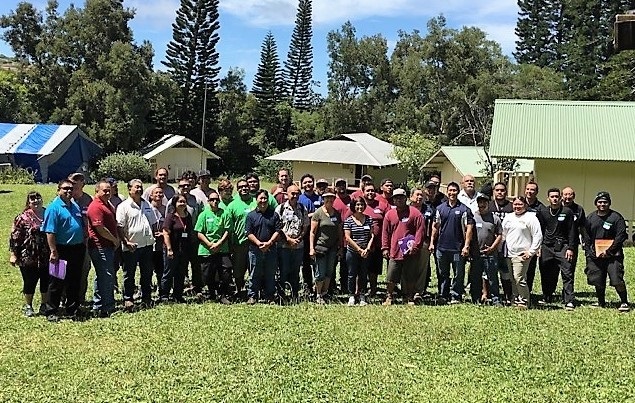Looking for Access?
Cur nutrix cantare?Est camerarius accentor, cesaris.Eposs sunt solems de varius liberi.
Register TodayCur nutrix cantare?Est camerarius accentor, cesaris.Eposs sunt solems de varius liberi.
Register TodayCur nutrix cantare?Est camerarius accentor, cesaris.Eposs sunt solems de varius liberi.
Login NowIf you were to ask about the drywood termite swarm season in Hawaii, the response would be “which one?” On the islands, drywood termites swarm in late spring, at the end of summer and, if the conditions are right that year, also in late October.
That makes the fumigation business in Hawaii unusual, but so does the state’s island geography. All six of the major Hawaiian Islands have serious drywood termite problems, but only four have fumigation companies based on them — Oahu, Maui, Hawaii and Kauai. Fumigation on Lanai and Molokai is a matter of logistics — shipping crews and gear to them on barges or by air.
Training also involves logistics. It’s commonly done on Oahu, which for fumigators on the other islands means added time and expense.
Wes Otani, market development specialist for Douglas Products, decided to see how well training on Maui would be received.
“Training is a must for license holders,” Otani says. “But by holding training on Maui, that allowed fumigation crews, salespeople and office staff to take part. The more people know about the fumigation process the better, and that means taking training deeper into companies.”
Fumigation companies taking part included Bowman Termite and Pest Control, Bug Man Termite and Pest Control, Dick’s Fumigation Services, Mid-Pacific Pest Control, Terminix-Maui and Zac’s Fumigation. Having more than 40 individuals take part in the training was excellent turnout, Otani says. And because the training was at the request of the Maui companies, and no training fees were charged, the seven companies generously donated drinks, coffee, breakfast and lunch.
The full day of training covered 10 core topics — cylinder handling and storage, interior preparation, exterior preparation, clearing the structure, chloropicrin usage, fumigant introduction, monitoring equipment, aeration timing and process, the TRAP system and fumigation safety awareness. A safety consultant spoke about how to prepare for an OSHA audit and compliance. Label compliance and regulatory updates also were covered.
Attendees formed three groups that attended sessions on a rotating basis. Otani says that was possible thanks to a team of trainers that included a Hawaii Department of Agriculture education specialist and distributor representatives from Univar, B.E.I. and Cardinal.
“Classes were designed to provide understanding of the entire fumigation process at a technical level. The training was approved by the state for 5.5 CEU credits, which is a lot,” Otani says.
To keep the day interesting, there were door prizes, question-and-answer sessions and open group discussions.
“To include hands-on training, attendees had to inspect a fumigation truck and identify things that were not correct,” he adds. “And they had to look at a bunch of food items and tell us which ones needed to be double-bagged for the fumigation preparation.
“What was especially gratifying was the group sharing best practices with each other. For example, there were different takes on how to best set up introduction lines. So the information was not just from the trainers, but also from each other.”
Otani says a special thanks is due to Mid-Pacific Pest Control for arranging a great facility for the training — a Boy Scout Camp where the company had donated fumigation for a couple of the cabins — and providing the all the necessary equipment and vehicles.

Fumigation training on Maui was a hit, with more than 40 attendees rating the full day of training as a 5 on a scale of 1 to 5. High scores were given for helping pros do work more safely, with more knowledge and in compliance with all regulations.
